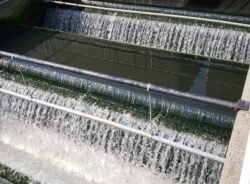
Westchester County Yonkers Joint Sewage Treatment Plant

Introduction
Nestled in the southernmost part of New York State, Yonkers is part of Westchester County, often referred to as a “gateway” city due to its proximity to New York City. One critical but often overlooked facility that ensures the county runs smoothly is the Westchester County Yonkers Joint Sewage Treatment Plant (YJSTP). This article explores the plant’s history, its role in serving the population, wastewater volume handled, treatment capacity, and recent local developments. Furthermore, it examines key projects and community engagement initiatives that underscore the plant’s commitment to sustainability and public health.
A Legacy of Service
The Westchester County Yonkers Joint Sewage Treatment Plant has a long history, dating back to the early 20th century. Originally designed to meet the demands of a growing population, the YJSTP has evolved through significant infrastructure improvements to serve an ever-expanding community effectively.
Population Served
The YJSTP primarily serves Yonkers and neighboring municipalities, accommodating a combined population of approximately 500,000 people. Given the density and industrial activities in the surrounding areas, the plant is pivotal in ensuring that wastewater is treated efficiently before it is released back into the environment.
Wastewater Volume and Treatment Capacity
The magnitude of the YJSTP’s operations is significant. The plant treats an impressive average of 120 million gallons of wastewater daily. During periods of heavy rainfall, this volume can surge up to 200 million gallons daily due to combined sewer systems that handle both sanitary sewage and stormwater runoff. The plant’s treatment capacity is robust, designed to manage these fluctuations and ensure that all effluent meets stringent environmental standards.
Advanced Treatment Processes
Preliminary Treatment
The preliminary treatment phase involves removing large debris and grit. Bar screens filter out large solids like rags, plastics, and other contaminants, while grit chambers allow sand, gravel, and other heavy materials to settle out.
Primary Treatment
In the primary treatment stage, wastewater flows into sedimentation tanks, where finer particles settle to the bottom as sludge while lighter materials float to the surface and are skimmed off.
Secondary Treatment
Secondary treatment employs biological processes. Aeration tanks foster microbial growth that consumes organic matter. The mixture then moves to secondary clarifiers, where microorganisms settle and are either returned to the aeration tank or removed as waste activated sludge.
Tertiary Treatment and Disinfection
To further purify the water, tertiary treatment may involve filtration and chemical disinfection, usually through chlorination and dechlorination processes. Increasingly, the plant is looking into more sustainable options like UV disinfection.
Recent News and Developments
New Operational Enhancements
In 2022, the YJSTP announced significant upgrades to its aeration systems, which improved the efficiency of biological treatment processes and reduced energy consumption by over 20%. New digital monitoring systems were also installed, enabling real-time analysis and adjustments that contribute to better overall plant performance.
Environmental Compliance
In recent years, the YJSTP has faced scrutiny from local environmental groups concerned about nutrient pollution, particularly nitrogen and phosphorus runoff contributing to algal blooms in nearby water bodies. New initiatives aim to curb these pollutants through advanced nutrient removal technologies.
Key Projects
Combined Sewer Overflow (CSO) Control Project
Combined Sewer Overflow (CSO) remains a significant issue, particularly during heavy rainstorms. The YJSTP has embarked on a multi-phase CSO Control Project designed to mitigate overflows and protect waterways. This involves the construction of additional storage tanks and tunnels to temporarily hold excess stormwater and sewage during peak flow periods.
Energy Efficiency and Renewable Initiatives
The sustainability of operations at the YJSTP is a focal point. The plant has invested in co-generation technology, enabling the production of electricity from biogas generated during the anaerobic digestion of sludge. Solar panels have also been installed to supplement electrical needs, making the plant partially self-sufficient in its energy requirements.
Odor Control Projects
Odor complaints have been a long-standing issue for residents living near the YJSTP. To address this, the plant has implemented advanced odor control measures, including activated carbon scrubbers and biofiltration systems designed to neutralize and capture malodorous compounds.
Community Engagement
Public Outreach Programs
Ethical operation necessitates active community involvement. The YJSTP regularly conducts public tours and open house events, providing residents with a firsthand view of the plant’s operations and the significant role it plays in public health and environmental protection.
Educational Initiatives
Collaborating with local schools and universities, the YJSTP offers educational programs that focus on water treatment processes, environmental science, and sustainable practices. These programs aim to foster a new generation of environmentally-conscious citizens and professionals.
Public-Private Partnerships
The YJSTP has forged partnerships with local industries and environmental organizations to work on innovative projects, such as the development of eco-parks using treated effluent and biosolids for irrigation and soil enhancement.
Feedback Mechanisms
Maintaining an open dialogue with the community is pivotal for the plant’s operations. Regular town hall meetings and surveys are conducted to gather public input, address concerns, and update residents on ongoing and planned projects.
Challenges and Future Directions
Regulatory Compliance
Meeting ever-stringent regulatory requirements remains a challenge. The Clean Water Act and state-specific mandates necessitate continuous upgrades and adaptations in technology and processes. The plant is committed to not only meeting but exceeding these standards.
Climate Change
The impact of climate change poses another significant challenge. Rising sea levels and more frequent extreme weather events necessitate adaptive infrastructure and flood resilience measures in the plant’s operations.
Technological Innovation
The future of the YJSTP will inevitably hinge on technological advancements. Integration of smart sensors, AI-driven analytics, and IoT devices can further streamline operations, enhance efficiency and improve decision-making capabilities.
Conclusion
The Westchester County Yonkers Joint Sewage Treatment Plant stands as a cornerstone for public health and environmental sustainability in the region. Through its advanced treatment processes, continuous upgrades, and proactive community outreach, the YJSTP not only manages wastewater but also champions the cause of clean water and ecological stewardship. As it faces future challenges and evolves with technological advancements, the plant remains committed to its mission of serving the community and protecting the environment.

